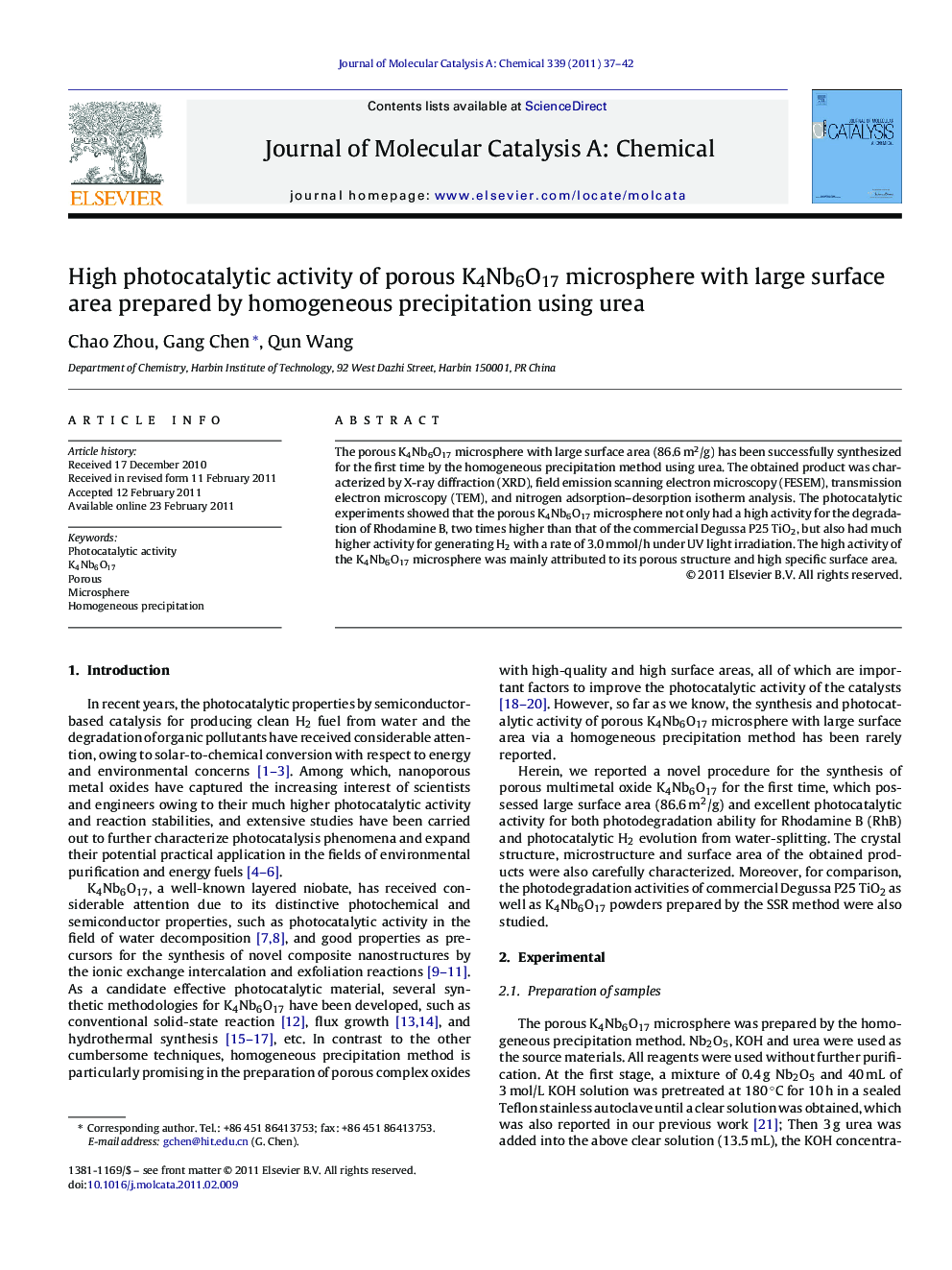| Article ID | Journal | Published Year | Pages | File Type |
|---|---|---|---|---|
| 66468 | Journal of Molecular Catalysis A: Chemical | 2011 | 6 Pages |
The porous K4Nb6O17 microsphere with large surface area (86.6 m2/g) has been successfully synthesized for the first time by the homogeneous precipitation method using urea. The obtained product was characterized by X-ray diffraction (XRD), field emission scanning electron microscopy (FESEM), transmission electron microscopy (TEM), and nitrogen adsorption–desorption isotherm analysis. The photocatalytic experiments showed that the porous K4Nb6O17 microsphere not only had a high activity for the degradation of Rhodamine B, two times higher than that of the commercial Degussa P25 TiO2, but also had much higher activity for generating H2 with a rate of 3.0 mmol/h under UV light irradiation. The high activity of the K4Nb6O17 microsphere was mainly attributed to its porous structure and high specific surface area.
Graphical abstractThe porous K4Nb6O17 microsphere with large surface area (86.6 m2/g) has been successfully synthesized for the first time by the homogeneous precipitation method using urea. The photocatalytic activity of the sample was first investigated using the degradation of Rhodamine B as a model reaction under UV light irradiation. The porous K4Nb6O17 microsphere exhibited much higher photodegradation efficiency, two times higher than that of the commercial Degussa P25 TiO2. The obtained sample also showed high photocatalytic activity for water splitting into H2 with a rate of 3.0 mmol/h under UV light irradiation. The high activity of the K4Nb6O17 microsphere was mainly attributed to its porous structure and high specific surface area. Our work also suggested that the homogeneous precipitation method may act as a new strategy for the design of new photocatalysts with large surface areas and high activity.Figure optionsDownload full-size imageDownload high-quality image (217 K)Download as PowerPoint slideHighlights► K4Nb6O17 microsphere with large surface area was synthesized for the first time. ► Higher photodegradation efficiency, two times higher than that of the Degussa P25. ► High photocatalytic activity for water splitting into H2 with a rate of 3.0 mmol/h. ► New strategy for design of photocatalysts with large surface areas and high activity.
